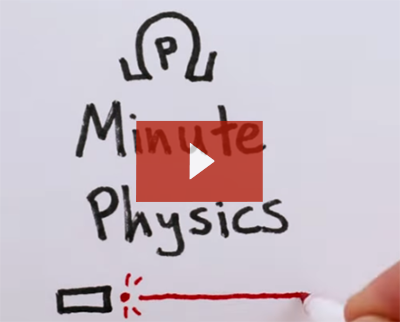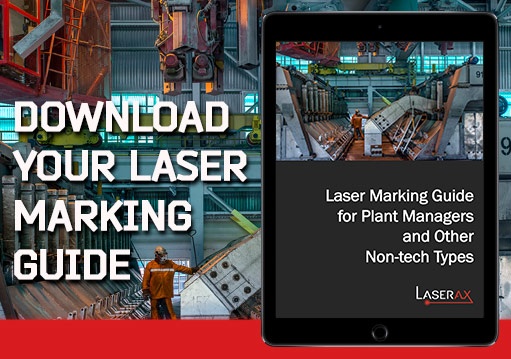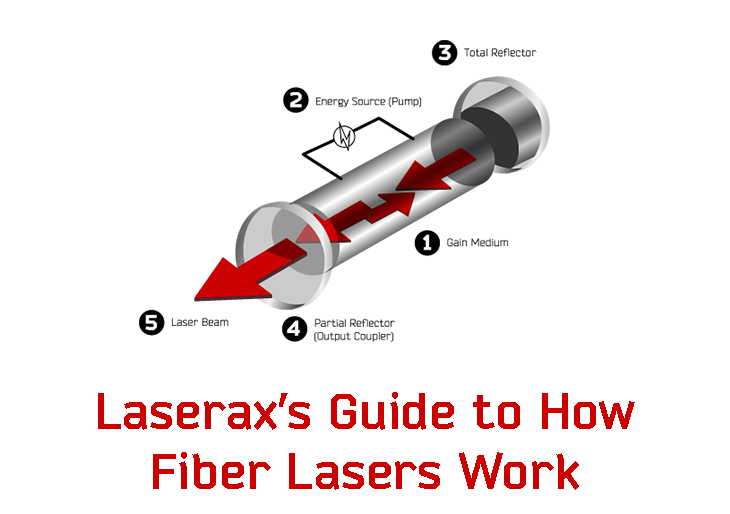
Like any other laser, fiber optic lasers are devices that generate light of a special kind. The laser beam is collimated, which means its rays are parellel, and monochromatic, featuring only a single wavelength. Furthermore, a laser beam is coherent: all of its light waves are synchronized.
What Is a Fiber Laser and How Does it Work?
All lasers are composed of a gain medium, a source that pumps energy in the gain medium, and two mirrors that reverberate the light inside the gain medium until it has all the properties expected from the laser beam.
YouTube Video - How lasers work
Fiber lasers differ from the other types of lasers in the following ways. They have a fiber optic gain medium that is doped with rare earth elements. The role of these rare earth elements is to modify the wavelength to a specific spectrum. Ytterbium fiber lasers are among the most popular.
The energy pump is made up of several laser diodes. Their light is funneled to the gain medium with heat-spliced fiber optics.
Finally, the mirrors are actually a network of slit that refract part of the light going through back and forth substituting “regular” mirrors. These network of slits are called Bragg network.
Benefits of the Fiber Laser Technology
-
Better Heat Management
The gain medium, being composed of fiber optics, can be very long. The volume-to-surface ratio of the fiber optics makes for an efficient heat dissipator.
-
High Efficiency
Laser diodes are a highly efficient way to generate light, which is why it makes sense to use them as a pump for fiber lasers. The total internal refraction of the fiber optics helps with the alignment of the laser beam. The stimulated emission is also eased both by the doped elements and the form factor of the fiber optics.
-
Easy Delivery of the Laser Beam to Optical Elements
Fiber optics are a very good way to bring the laser beam to the optical elements, such as Laserax’s beam expander and collimating lens. It makes for a very stable alignment.
-
Durability, Long Useful Life and Low Maintenance
Good heat management, the absence of moving parts, and stability of the fiber optics make for a mean time before failure (MTBF) of as much as 100 000 h.
Laserax Fiber Lasers
For the reasons detailed throughout this text, Laserax has developed pulsed fiber optic lasers that emit in the near-infrared spectrum. They are ideal for material processing, such as laser marking and laser cleaning. The lasers used in Laserax's laser systems are the LXQ, LXQ 3D and LXQ 3D Vision.
LXQ
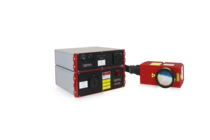
The parts that are processed by this laser have to be positioned at no more than +/- 3 mm from the focal point of the laser. They can be moving or stop prior to processing. Laserax’s LXQ fiber laser is used when the targeted area is fairly flat and has constant positioning with respect to the laser aperture. Visit our product page for more information about the LXQ 2D fiber laser.
LXQ 3D
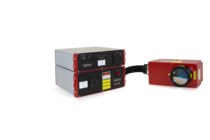 The LXQ 3D is more flexible in the sense that the parts don’t have to be positioned as precisely as for the LXQ. They can be positioned at +/- 70 mm from the focal point of the laser. If they are moving, the distance between the parts and the laser aperture has to remain the same. Laserax LXQ 3D fiber laser is used when the targeted area is curved or inclined or when the position of the parts change from one to another with respect to the laser aperture.
The LXQ 3D is more flexible in the sense that the parts don’t have to be positioned as precisely as for the LXQ. They can be positioned at +/- 70 mm from the focal point of the laser. If they are moving, the distance between the parts and the laser aperture has to remain the same. Laserax LXQ 3D fiber laser is used when the targeted area is curved or inclined or when the position of the parts change from one to another with respect to the laser aperture.
LXQ 3D Vision
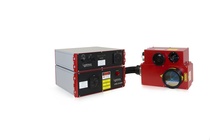 This laser comes with its own machine vision system that generates a high-precision numerical model of the surface to be laser-processed. This allows the processing of parts with profiles that are not known in advance. The parts have to remain still as they are processed. Laserax’s LXQ 3D Vision fiber laser is used when plenty of processing time is available, the parts’ geometries vary a lot, and the position with respect to the laser aperture varies a lot.
This laser comes with its own machine vision system that generates a high-precision numerical model of the surface to be laser-processed. This allows the processing of parts with profiles that are not known in advance. The parts have to remain still as they are processed. Laserax’s LXQ 3D Vision fiber laser is used when plenty of processing time is available, the parts’ geometries vary a lot, and the position with respect to the laser aperture varies a lot.
More information on the LXQ, the LXQ 3D and the LXQ 3D Vision is available on our website. Should you have any question feel free to get in touch with one of our fiber laser technology experts.
Conclusion
Laserax’s fiber lasers are at the core of our laser systems. They determine the speed and performance of the system. Other components have huge impact on the ability to successfully integrate a laser system in your factory and for a wide variety of industrial applications.
The laser safety enclosures ensure the security of the system. Laserax’s safety enclosures reduce the need for safety mitigating procedures to zero.
We have developed a series of options that will unlock even more value from your laser system. Some of our most appreciated options are the vortex and the dust management systems. Also noteworthy, Laserax’s HMI and code validation unit.
Fiber laser technology experts are in agreement: fiber optic lasers are the way of the future. They are easily scalable in term of optical powers. They are very well-adapted to the needs of the automotive and primary metal industries. Fiber lasers are easy to automate which makes them a great alternative to other direct part marking technologies such as dot peening or scribing. They don’t require any consumables which is much better than inkjet printing or metal tags. If you’re still unsure, fiber lasers can boast an MTBF of 100 000 hours.
Source:
YouTube Video: https://www.youtube.com/user/minutephysics
